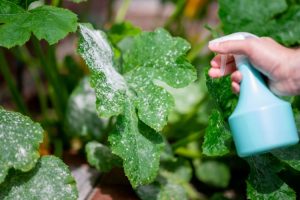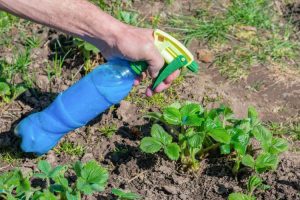2. Prevention
Powdery mildew rarely kills a plant. But that doesn’t mean it isn’t a big deal if a plant becomes infected. The fungus pulls nutrients from the host plant and stunts productivity, which usually leads to a decrease in the number of flowers and fruit produced warns that the development of powdery mildew is favored by high humidity and moderate temperatures during the day, followed by cool nights. So, it’s especially important to monitor plants during late spring and early fall.
Fortunately, there are several ways to decrease your chances of having to battle powdery mildew:
• As your first line of defense, choose plant varieties that are resistant to powdery mildew. Resistant varieties may still become infected, but should be able to avoid the degree of damage done to susceptible varieties.
• Place plants in full sun since direct sun exposure prevents powdery mildew spores from germinating.
• Prune plants appropriately and allow for adequate spacing as a way to increase airflow and decrease humidity.
• During optimal conditions, consider spraying susceptible plants with preventative fungicides or homemade sprays. Try spraying plants with a mixture of 1 teaspoon baking soda to 1 quart water, which will increase pH and inhibit powdery mildew from forming.

3. Control
Once a plant becomes infected with powdery mildew, it’s unlikely you’ll be able to cure it completely. But, you can keep it under control and minimize damage. If you’re faced with powdery mildew, the following two modes of control are your best bet:

• Remove and destroy infected plant material immediately. Spores are easily carried by wind from one host to another, and that they readily overwinter on plants or in the soil.
• Spray infected plants with a fungicide. Try using sulfur, lime-sulfur, or neem oil. As an alternative to fungicides, try spraying infected plants with a mixture of 1 part milk to 9 parts water as milk has the ability to slow the spreading fungus. You will want to apply the milk mixture frequently, and reapply after rainfall.









